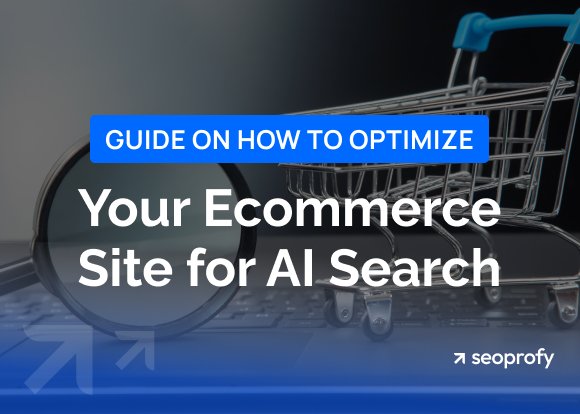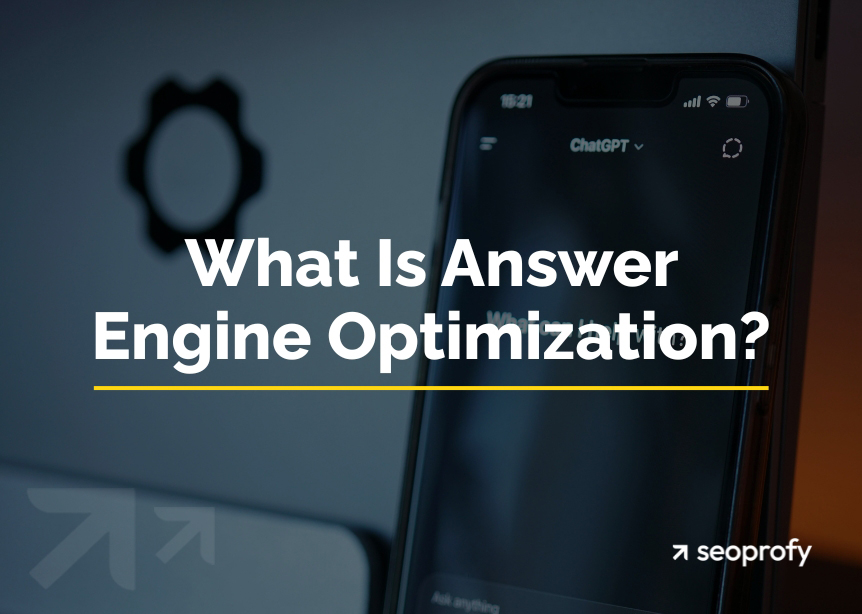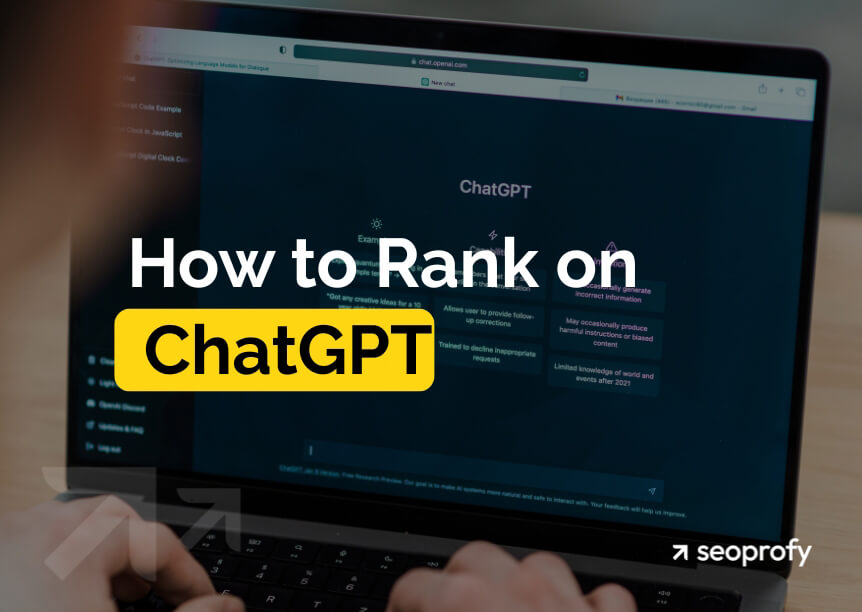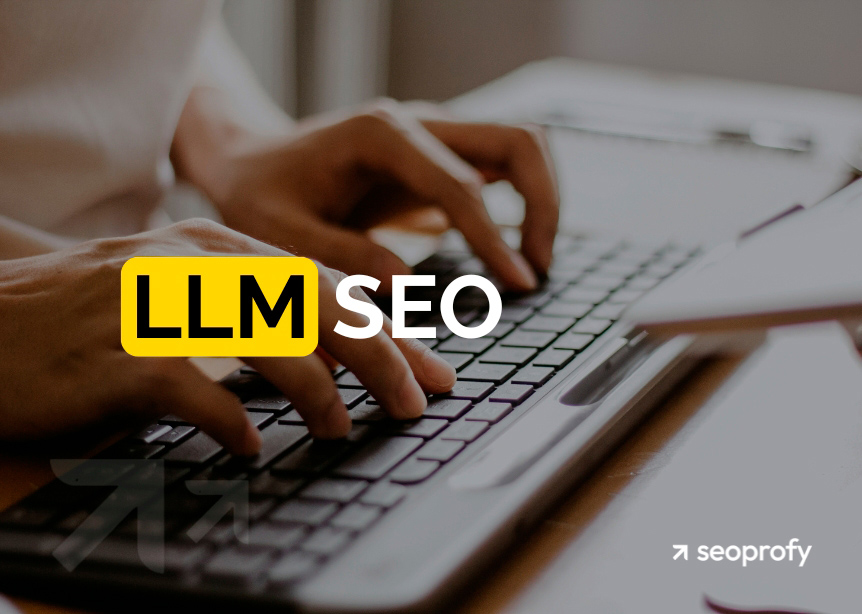AEO and SEO both help bring customers to your business, but in different ways. SEO aims to rank your pages in traditional search engines so people click through and read them. AEO prepares your content to appear directly inside generated answers — in Google’s AI Mode, Perplexity, Bing Copilot, or ChatGPT.
You’ve probably already noticed that in 2025, fewer users scroll through pages of links. What they do instead is go to tools like ChatGPT, Perplexity, Bing Copilot, or voice assistants to get personalized answers instantly.
Because these tools are becoming part of everyday search, in this guide we’ll answer common questions such as “what is AEO vs SEO?” and also share proven ways to optimize for both strategies, so you can stay visible across multiple search experiences.
- Traditional SEO remains the base for AEO and GEO. It still drives most organic traffic, leads, and delivers an 8x ROI according to industry benchmarks.
- The AEO strategies that seem to work best right now are structured data, short and direct answers, conversational subheadings and FAQs, and citations from trusted sources.
- Traffic from AI tools can be smaller, but it’s often more qualified. Semrush’s 2025 study shows visitors coming from AI-generated answers convert 4.4× better on average than traditional organic clicks.
- Looking ahead, both SEO and AEO will lean more on personalization, original insights, and content built around specific contexts.
What is Answer Engine Optimization (AEO)?
Answer Engine Optimization (AEO) is a newer search strategy that prepares your content to appear in the direct responses people now see in AI-powered search engines. It uses a set of tactics that make your content easier to understand, select, and surface across LLMs, virtual assistants, and traditional search.
Many people use AEO interchangeably with Generative Engine Optimization (GEO). However, GEO is the broader strategy that looks at how content is chosen, cited, and reused across generative systems, while AEO concentrates on structuring information for quick, Q&A-style visibility.
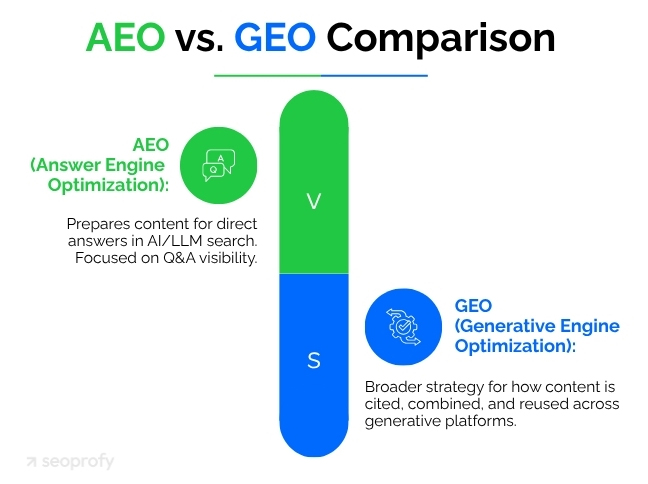
For example, when someone asks, “What’s the best accounting software for freelancers?” these platforms select a few trusted sources to create their answer. If your content isn’t included in these AI responses, your business stays out of sight during that moment. When it is, your brand name appears inside the summary and reaches people exactly when they’re looking for a product or service you offer, just like in the example below:
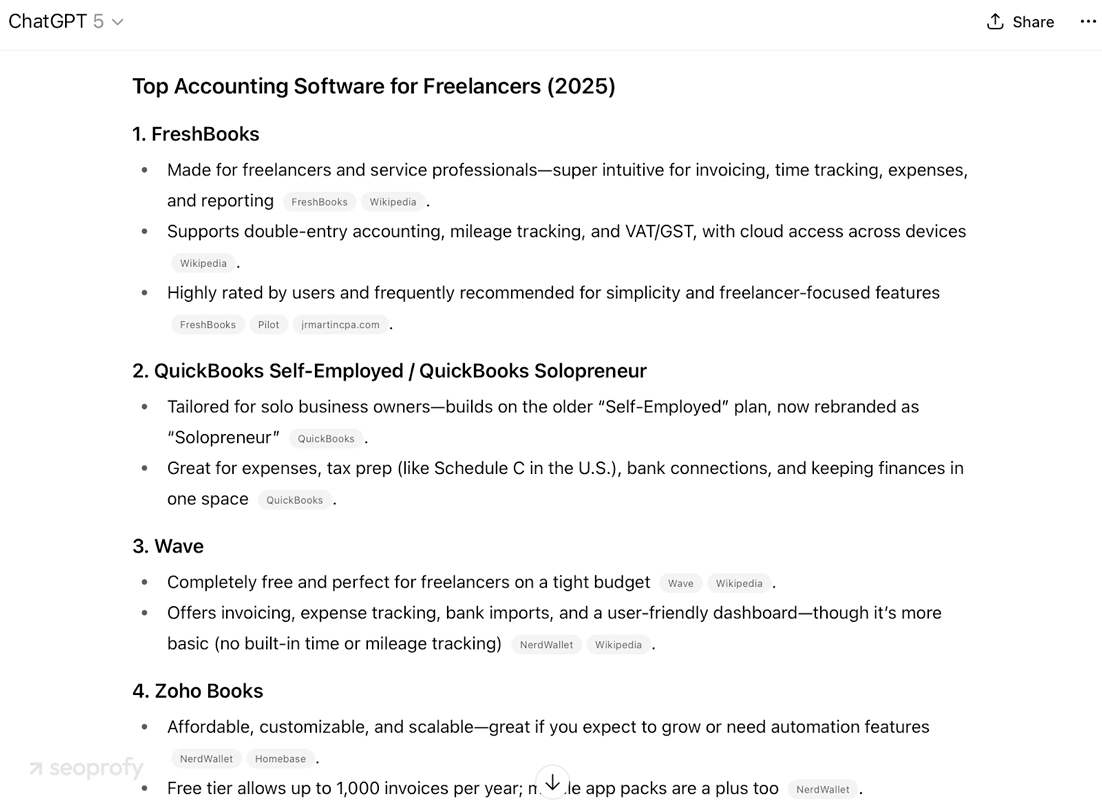
What is Search Engine Optimization (SEO)?
SEO is the process of optimizing a website so it ranks organically in search engine results for relevant queries. It’s been part of digital marketing for decades and still attracts a large share of traffic, leads, and conversions for many businesses. Based on SEO data from 119 companies, it drives 8x ROI, which explains why marketing teams continue to invest in it.
The main strategies that go into search engine optimization are keyword research, content creation, link building, and technical and local SEO. All these elements are the central pieces that work together to improve a website’s visibility in search engines.
What Are the Key Differences Between AEO and SEO?
Now that you know the definitions of these two strategies, let’s look at how AEO vs SEO plays out in practice and where the biggest differences appear.
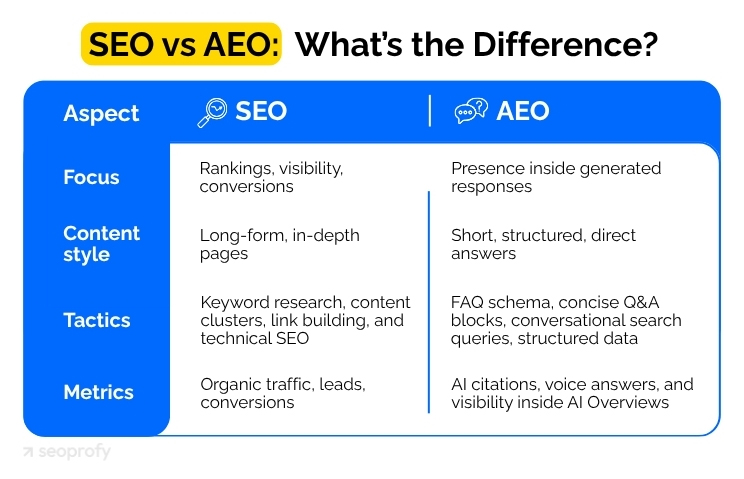
Content Format
Traditional SEO focuses on long-form content (guides, landing pages, research) that covers a topic end-to-end. One such page can rank for a primary term and dozens of variations because it:
- Answers the big question and all the follow-ups
- Gives room for comparisons, screenshots, pricing, and use cases
- Earns links and internal links naturally
- Signals depth and credibility
If we compare it to answer engine optimization, the goal here is to give people a direct response right away. Pages that perform well for AEO are usually well-formatted and mirror the questions prospects might have in a conversational tone.
In short, traditional SEO practices are designed for depth and long-term rankings. AEO-ready sections grab the instant answer spot. A common strategy to use now is to combine both approaches: give a direct answer first, and follow with more detailed information for readers who want more.
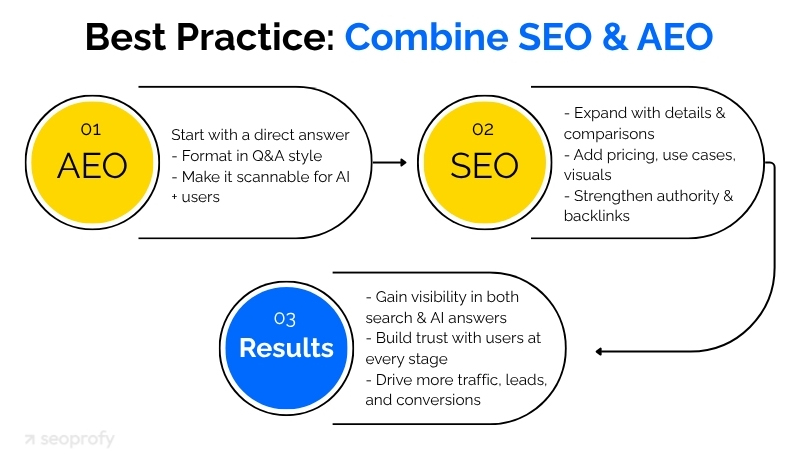
Search Behaviors
Search engine optimization deals with optimizing content around specific text-based search queries or phrases that users type into Google or Bing. These searches generally target broad audiences who review multiple pages before selecting the most relevant links.
AEO, in turn, connects to a context-based habit we see more often now. People phrase their searches as full, conversational questions and often turn to AI tools or voice assistants such as Alexa and Siri. In such cases, users expect to get a summarized response instantly without opening multiple links.
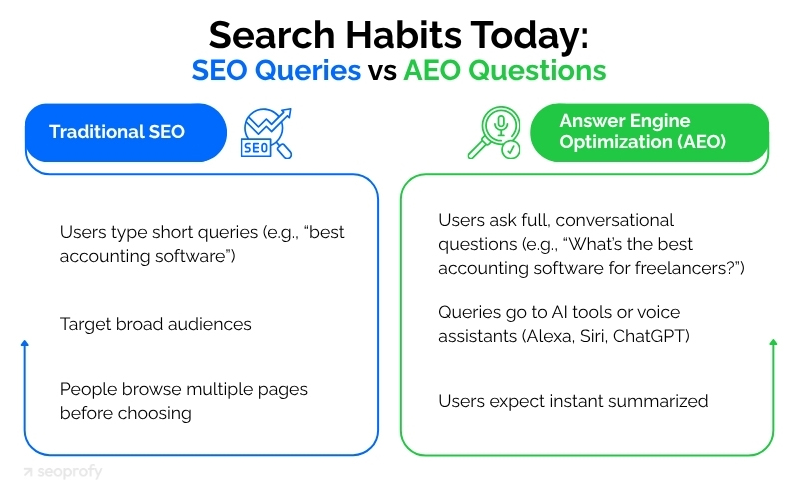
Technical Requirements
With pure SEO, the technical basics haven’t changed much over the years. Google looks at signals like backlinks, keyword relevance, meta tags, site structure, mobile optimization, and Web Core Vitals to understand and rank your pages.
In answer engine optimization, more attention goes into structured data and content formatting so tools like ChatGPT, Perplexity, and voice assistants can interpret it easily. For this reason, pages that are designed for AEO often include FAQ and How To schema, and well-organized Q&A sections.
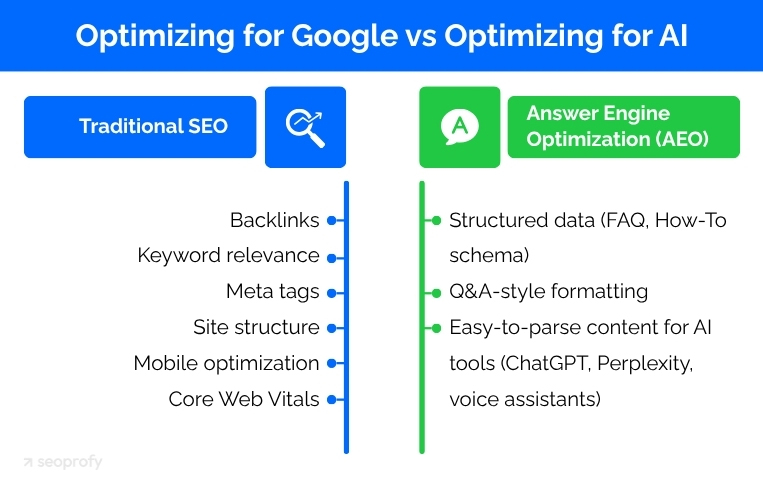
Metrics of Success
SEO performance is commonly measured through keyword rankings, traffic, leads, and conversions. These metrics show how well your pages draw in visitors and, eventually, turn that attention into leads or sales.
In contrast to traditional SEO metrics, AEO focuses on how well your content ranks in AI overviews and shows up in voice search results and tools like ChatGPT or Perplexity.
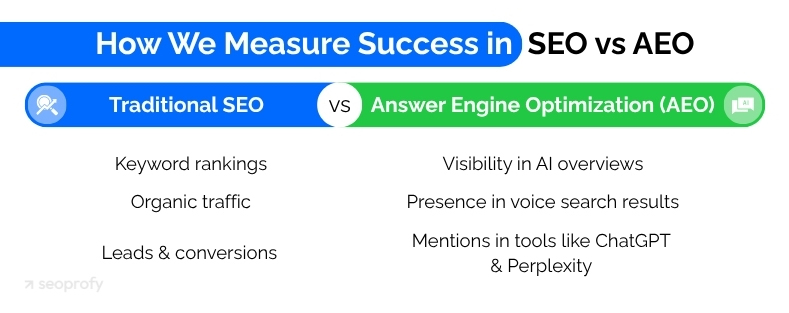
Timeframe
SEO vs AEO also differ in timing. SEO takes longer to show results since rankings improve gradually as a site gains authority, earns backlinks, and builds out topic coverage. This growth compounds over time, but the process is rarely immediate.
AEO can move faster in comparison. The moment you restructure your content, it doesn’t take long for it to get cited by AI systems. That visibility can happen sooner, though maintaining it still depends on keeping your web pages up to date and relevant.
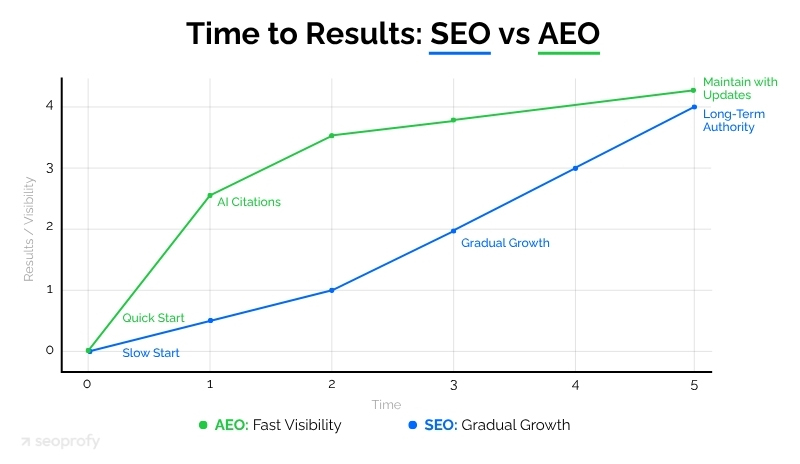
At SeoProfy, we design campaigns that combine SEO and AEO so your brand can see more qualified traffic from Google, LLMs, and virtual assistants. Our team will help you:
- Get your content cited in AI-generated answers
- Win more featured snippets and voice search spots
- Grow your share of voice across answer engines

How to Combine AEO and SEO for Maximum Visibility
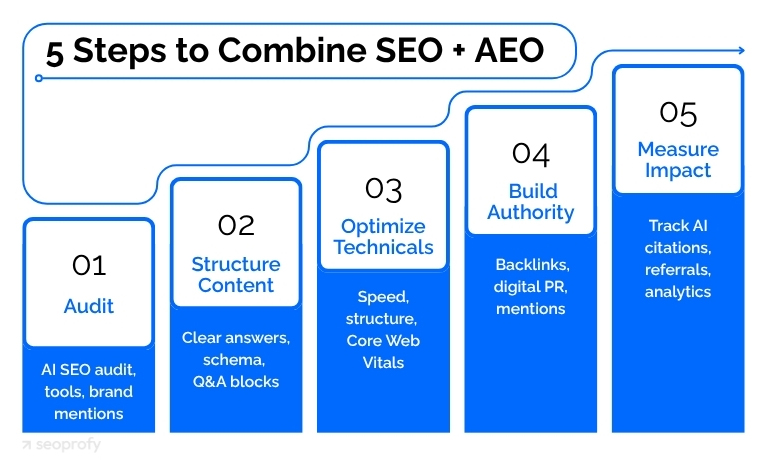
Although the AEO vs SEO debate often focuses on differences, the two strategies intersect more than most people think. AI platforms still use traditional SEO signals such as topical content, backlinks, and technical optimization when deciding which content to feature to provide satisfactory answers.
This creates a connection between SEO and AEO, where better SEO foundations naturally lead to more opportunities to appear in AI-generated summaries, voice search results, and featured snippets.
So how do you optimize your site to reap the benefits from both? Below, we’ll share some winning strategies that our team has already tested and seen great results from.
Start with a Detailed AI SEO Audit
Before you move on to optimizing your site, you first need to know your current performance and brand mentions in AI search engines. This helps you in two ways:
- You see your search visibility in AI-generated answers across AI models and Google’s AI Overviews.
- You understand how your site performs technically — schema setup, content structure, and overall health.
If you’d like to check this yourself, there are a few tools and workflows that can be of great help:
- Ahrefs Brand Radar: To see how often your brand gets mentioned and cited in AI systems.
- n8n AI SEO Readability Workflow: To check how “friendly” your pages are for LLMs.
- Google’s Rich Results Test: To validate schema for FAQ, HowTo, and Q&A sections.
But if you’d rather outsource this part to an expert agency, consider our AI SEO Audit. This is a service we recently launched to help businesses measure and improve their presence across answer engines. Our audit checks 53 different checkpoints:
- Brand visibility: Where and how often your brand appears inside AI-generated results.
- Technical aspects: Crawlability, schema setup, site speed, and indexing for AI bots.
- On-page optimization: How clear and structured your content is for large language models.
- Off-page and brand signals: How often you’re mentioned across trusted sources, reviews, and curated “best of” lists.
- Action plan: A personalized checklist with steps to improve your AI search presence for relevant keywords.
With every audit, you also get a 60-minute results call to walk through the findings, plus optional implementation AI SEO support if you want us to help put recommendations into action.
After reviewing your results, the next step is to put those insights into practice, starting with your content.
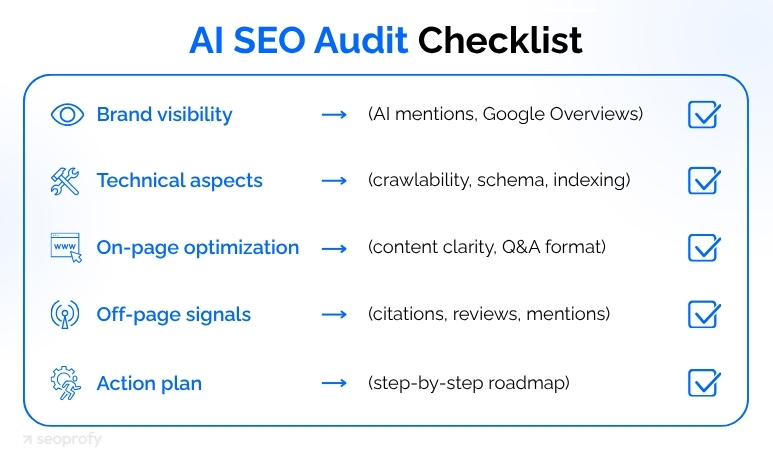
Structure Your Content for AEO and SEO
The best approach here is to start with your priority pages. The way you format them now matters more than ever. AI models scan for concise and clearly segmented information that they can easily lift. Here are a few AEO optimization tactics you can try:
- Lead with clear and concise answers near the top of the page (40–60 words)
- Use subheadings that reflect the natural questions users ask
- Add schema markup like FAQPage, Q&A, HowTo, and speakable schema for voice queries
- Retain detailed explanations below the answer for readers who want context
- Structure the content in formats AI models understand best (Q&A blocks, tables, and lists)
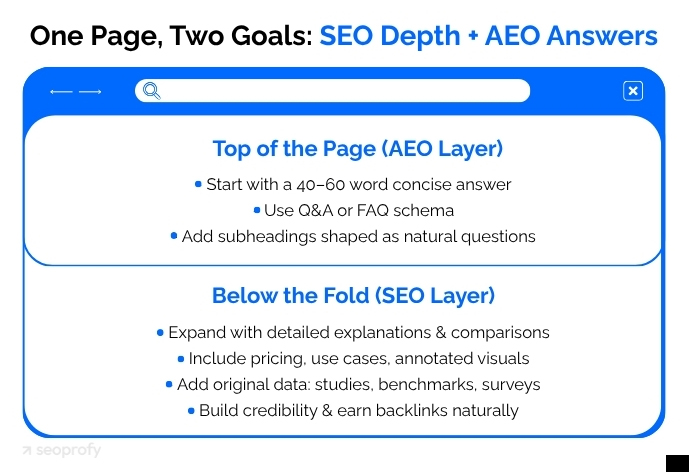
After rewriting existing content, you can also create dedicated AEO-friendly resources. These are designed specifically for LLM SEO and the way voice assistants process information:
- Look for questions in your niche that aren’t well answered yet (the Answer the Public and PAA sections can be helpful here).
- Personalize content to different user personas, industries, or use cases with annotated screenshots to match specific user intents.
- Publish unique studies, benchmarks, or surveys that AI systems often favor for factual queries.
These content tactics don’t just work in theory — we’ve tested them ourselves. When we wrote our SEO pricing guide, we researched dozens of companies and industries to build our page.
Now, when you ask ChatGPT or other LLMs about SEO pricing, our guide is cited in almost every related question.
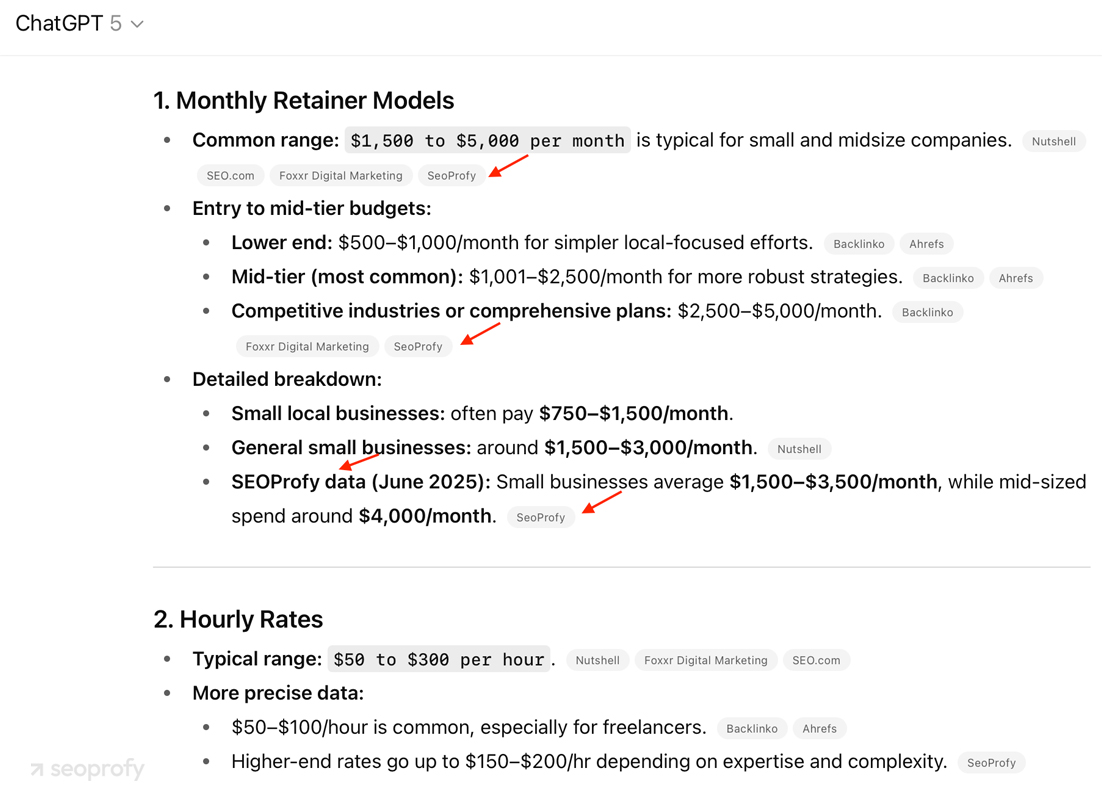
This shows that original data gives your content a better chance to rank on ChatGPT and appear in other AI-generated answers. As a bonus, these kinds of pages also tend to attract backlinks naturally.
Work on the Technical Search Optimization
Some of the basics of technical optimization, like schema and structured data, we’ve already mentioned earlier, but there are a few more areas to look at if you want to show up for relevant user queries across search engines and AI models. When talking about AEO vs SEO differences, these technical steps support both approaches:
- Page speed: Check both desktop and mobile. Faster pages improve the browsing experience for your visitors and help crawlers and AI tools process your content without delays.
- Site structure: Keep your pages connected in a way that’s easy to follow. It aids crawlers and AI bots in figuring out what belongs where.
- Core Web Vitals: They’re a smaller ranking factor but still worth tracking since they influence usability and cross-device performance.
Invest in Digital PR and Backlink Building for Wider Organic Visibility
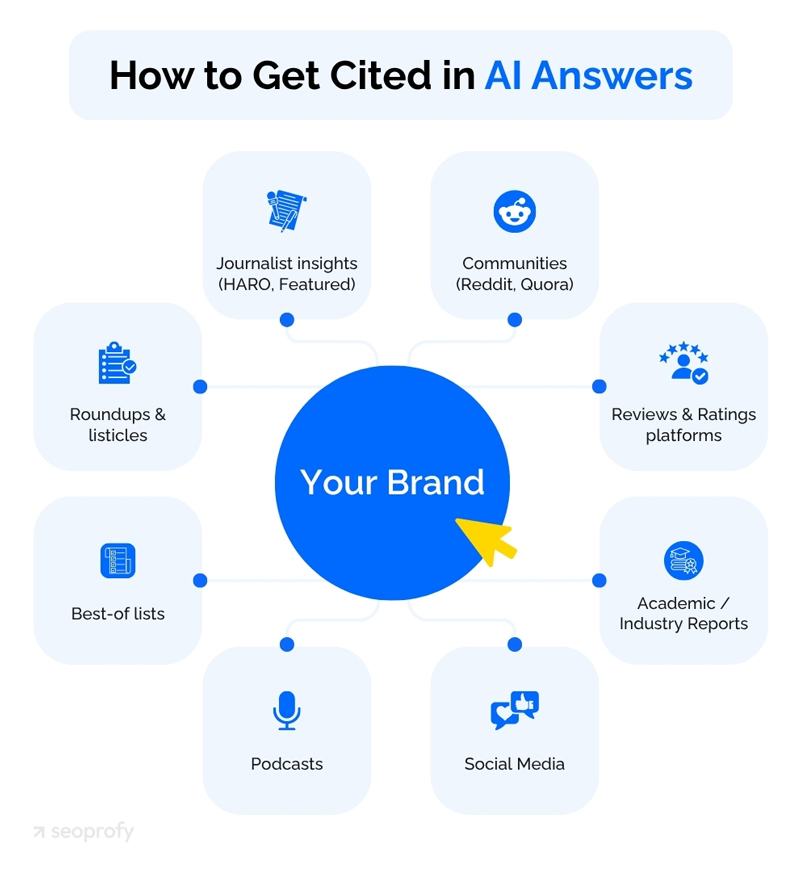
In the context of AEO vs SEO, citations matter for both approaches. When tools like Google Gemini, ChatGPT Browse, Perplexity, and Bing Copilot build their responses, they reference information from a limited pool of sources. If your brand doesn’t surface there, these systems have no context to surface you inside their answers.
Here’s the thing: every mention of your business — in an article, a roundup, a Reddit thread, or a Quora discussion — leaves a footprint that search engines and AI platforms can use. For SEO, these mentions strengthen your domain authority and rankings. For AEO, they increase the chances of your content being referenced directly in responses.
As for the tactics to get those mentions, here are a few you can try:
- Get featured in roundups and comparisons: Reach out to blogs and publishers in your niche and ask to be included in relevant listicles. These pages are commonly cited inside AI-generated answers.
- Pitch expert insights to journalists: Use platforms like HARO or Featured to contribute quotes, data, or commentary. Content published on trusted, high-authority domains often ends up referenced by AI tools.
- Leverage user-generated content and communities: Places like Reddit and Quora are among the top-cited domains inside AI models, and when your brand gets mentioned in these threads, it creates additional “footprints” for both Google and AI models to draw on later.
- Check impact with Google Analytics 4: Monitor referral reports to find out which mentions already bring visitors to your site. Those are usually the publications and discussions you can double down on since they’re already working for you.
AEO vs SEO in 2025: What Trends Will Shape the Future?
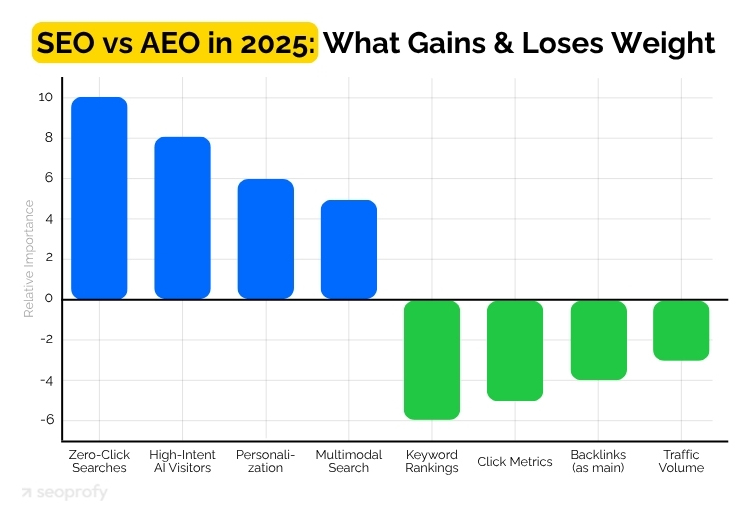
SEO has gone through big changes in the past few years, and the pace isn’t slowing down. At our agency, here are a few direction-of-travel signals we’ve noticed:
- Zero-click searches only increase. A study from SparkToro shows that roughly 58–60% of Google searches end without a click. That tells you why citations, snippets, and mentions matter more than they did two years ago.
- AI visitors can be high-intent. Semrush’s 2025 analysis found visitors arriving from AI sources convert about 4.4× better than traditional organic on average.
- Personalization is getting more important. Answers in AI tools are context-based (location, past behavior, current task). Pages optimized for conversational searches and written for a variety of use cases hold up better than broad explainers.
- Multimodal is here. Not only is text being quoted by AI systems. Images, video, audio, and transcripts are being read and cited, too.
So what does that mean for your answer engine optimization?
- Prioritize the SEO foundation (crawlability, indexation, internal links, topical coverage).
- Optimize for strategies we listed in this guide (direct answers near the top, Q&A blocks, tables, schema where relevant, and original data).
- Track presence as well as website traffic (featured snippet share, AI citations, voice answers, and your share of voice across ChatGPT/Perplexity/Bing Copilot).
People will still search to meet their needs in the years to come, and that isn’t going away. But the way they search and where they get answers will continue moving toward AI-powered tools. And as LLM usage grows, content that is structured for both traditional search and answer engines will have a major advantage.
Winning the Future of Search with AEO and SEO
As we can see from our AEO vs SEO comparison, the principles and pillars of SEO remain the same when optimizing for AI-generated summaries. Moreover, Google holds close to 89% of the market, and that isn’t changing any time soon. So while adapting to new strategies makes sense, SEO basics continue to matter just as much.
At our SEO company, we help brands take advantage of both. Our team combines hands-on experience, data-driven research, and advanced tools to make your content visible in traditional search and answer engines. This approach helps you reach more potential customers and capture more qualified traffic for your business.







